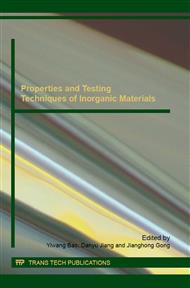p.257
p.261
p.267
p.272
p.278
p.285
p.289
p.293
p.297
Fabrication of Morphology Controllable Vertically Aligned TiO2 Nanorod Arrays for Dye-Sensitized Solar Cells
Abstract:
In this work, vertically aligned TiO2 nanorod arrays (NR) are synthesized directly on FTO coated glass substrate by hydrothermal method. The samples are characterized by XRD, SEM, TEM and the results indicate that the 1-D nanorods are of single crystal rutile structure with growth direction along the [001] direction. The morphology (diameter, thickness and density) of the nanorods can be adjusted by changing the precursor amounts. The possible growth mechanism of TiO2 nanorods on FTO substrate has also been briefly discussed in this work. For dye-sensitized solar cells (DSSCs) fabricated of different thickness nanorods, a power conversion efficiency (PCE) of 1.74% has been achieved by using ~3μm nanorod arrays under simulated AM 1.5 illumination (100 mW cm-2). It is expected that the 1-D nanorods can be composited with other nanomaterial of different structures and morphologies to enhance the efficiency of DSSCs.
Info:
Periodical:
Pages:
278-281
Citation:
Online since:
February 2016
Authors:
Keywords:
Price:
Сopyright:
© 2016 Trans Tech Publications Ltd. All Rights Reserved
Share:
Citation:


